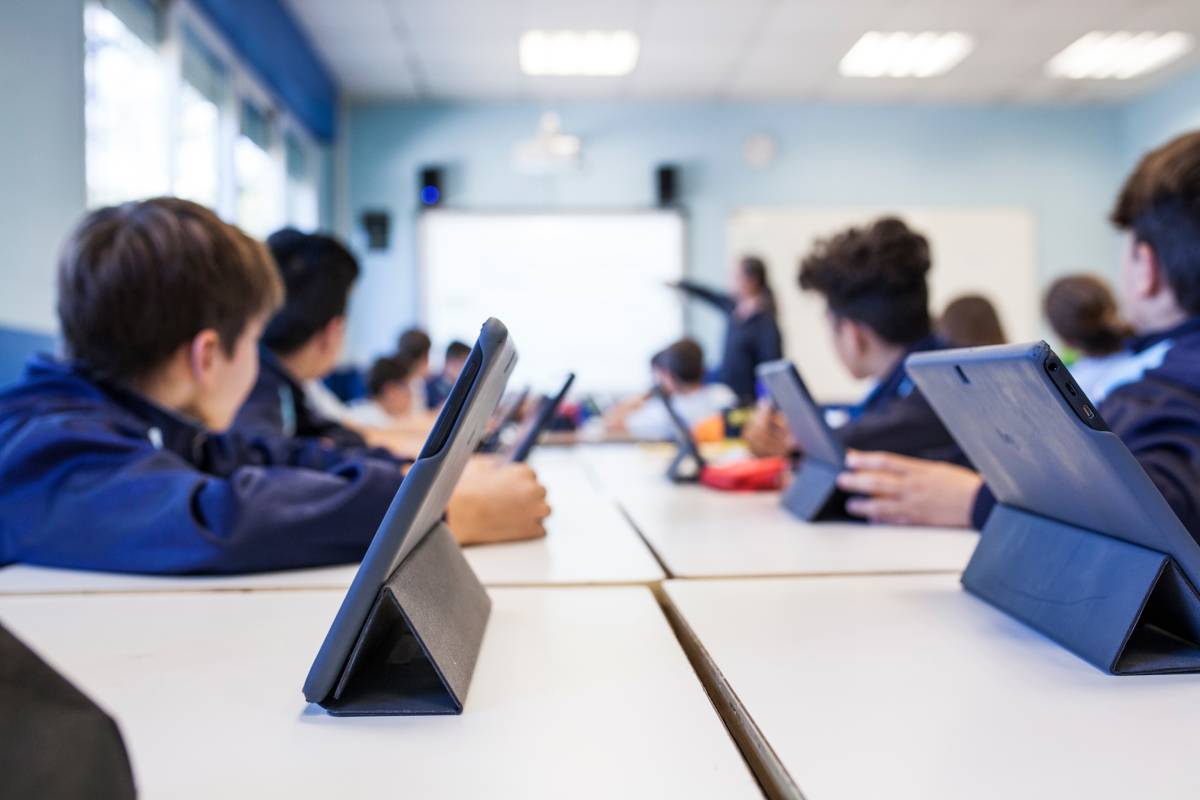Affordable Primary Science Tuition Singapore for All Learning Needs
Affordable Primary Science Tuition Singapore for All Learning Needs
Blog Article
A Comprehensive Guide to the Different Learning Methods in Main Scientific Research Instruction
The expedition of diverse learning approaches in key science instruction offers a possibility for teachers to improve pupil involvement and understanding considerably. By examining hands-on understanding strategies, inquiry-based approaches, and collaborative techniques, we can identify reliable practices that provide to different learning designs.

Hands-On Understanding Strategies
Hands-on learning techniques play a critical function in main science direction, involving trainees in energetic expedition and trial and error. These approaches enable students to connect straight with sensations and materials, promoting a deeper understanding of scientific concepts. By using manipulatives, models, and real-life experiments, educators create a setting where pupils can observe, assume, and check their ideas.
Such techniques not only boost understanding however likewise cultivate crucial thinking and analytic abilities. When trainees join activities like constructing straightforward makers, growing seeds, or carrying out chemical reactions, they are encouraged to ask inquiries and look for responses through their very own monitorings. This experiential technique assists to demystify intricate scientific principles, making them extra accessible and relatable.
In addition, hands-on understanding promotes collaboration amongst peers, as trainees frequently operate in teams to carry out experiments or share findings. This teamwork not just enriches their understanding experience however also creates vital social skills. Ultimately, integrating hands-on strategies in main science guideline promotes a lifelong love of learning and inquisitiveness concerning the environment, laying a strong structure for future scholastic quests in scientific research and past.
Inquiry-Based Understanding
Inquiry-based understanding is an educational technique that motivates trainees to ask concerns, examine sensations, and construct their very own understanding of clinical ideas. This method moves the focus from traditional teacher-led guideline to a more student-centered experience, where students take the campaign in their academic trip. By promoting inquisitiveness, inquiry-based discovering promotes deeper involvement with the product, permitting students to check out topics in a purposeful context.
In technique, this technique typically entails hands-on experiments, observations, and important thinking activities that line up closely with the scientific technique. Pupils are encouraged to create hypotheses, layout investigations, and evaluate data, which cultivates crucial abilities such as analytical and problem-solving reasoning. The function of the teacher in this framework is to assist in expedition, leading pupils via the questions procedure while urging independent idea and cooperation.
Moreover, inquiry-based knowing nurtures a sense of ownership over the knowing process, motivating students to go after understanding actively. This method not only enhances understanding of scientific concepts but likewise promotes a long-lasting love for discovering, furnishing trainees with the abilities needed to navigate a progressively complicated world.
Collaborative Knowing Approaches
Collective knowing approaches encourage trainees to take part in purposeful interactions with peers, fostering a common obligation for their educational outcomes. In key science instruction, these approaches motivate learners to function together to discover clinical concepts, fix issues, and conduct experiments (primary science tuition Singapore). By getting involved in group tasks, trainees can utilize varied perspectives, permitting for richer understanding and retention of scientific expertise
One secret facet of collective learning is the focus on communication abilities. Trainees should articulate their ideas, listen proactively to others, and bargain ideas, Home Page all of which are critical expertises in both academic and real-world contexts. This social interaction not only boosts their understanding of scientific principles but additionally promotes team effort and conflict resolution skills.
In addition, collective understanding usually causes raised motivation and interaction. When pupils see the value of their payments within a team, they are most likely to take possession of their knowing trip. Educators can promote this procedure by making structured group tasks that straighten with educational program goals while supplying advice on effective partnership strategies. In general, integrating collaborative knowing methods in main scientific research guideline grows a vibrant learning atmosphere that prepares pupils More Help for future scholastic and social challenges.
Modern Technology Combination in Science
The integration of technology in main science direction boosts discovering experiences by giving innovative tools and sources that support numerous teaching techniques, consisting of collaborative understanding - primary science tuition Singapore. Using digital systems, simulations, and interactive applications enables students to involve deeply with scientific ideas, assisting in a more hands-on strategy to knowing
Virtual labs, for example, allow learners to carry out experiments safely and effectively, promoting inquiry-based discovering. These tools can replicate real-world scientific situations, allowing students to imagine intricate processes that would be hard to replicate in a typical classroom setting. Modern technology fosters communication and cooperation amongst students, as they can share searchings for and function together on jobs with on-line platforms.
Additionally, multimedia discussions and instructional videos can enhance lessons by providing to varied learning styles, making abstract ideas extra accessible. Data analysis devices additionally empower students to gather and translate clinical data, reinforcing critical believing abilities. Overall, the hop over to here tactical unification of technology in main science direction not just enhances interaction yet also prepares trainees for a technically innovative culture, equipping them with vital skills for future scientific ventures.
Separated Guideline Approaches
Set apart instruction strategies are important for dealing with the diverse requirements of learners in primary science education and learning. These strategies make it possible for instructors to customize their training approaches to suit differing capabilities, rate of interests, and learning styles within the classroom. By using separated direction, instructors can create an inclusive setting that cultivates interaction and enhances understanding of clinical principles.
One efficient technique is to use adaptable grouping, which allows pupils to work together with peers at similar ability degrees or with differing viewpoints. This technique encourages peer learning and advertises essential thinking. In addition, using options in assignments can encourage trainees, allowing them to pick projects that reverberate with their rate of interests while still fulfilling curricular purposes.
Furthermore, incorporating tiered tasks is one more beneficial method. By designing tasks with differing degrees of intricacy, instructors can guarantee that all pupils are properly tested, no matter their efficiency. Making use of formative evaluations to determine understanding additional makes it possible for teachers to change their educational methods dynamically, making sure that each student obtains the support they need.
Inevitably, implementing distinguished direction approaches in primary science education and learning not just boosts student knowing results yet also cultivates a passion for science, preparing pupils for future scholastic searches.

Verdict
In summary, effective key scientific research instruction demands a complex method that encompasses hands-on understanding, inquiry-based techniques, and collaborative strategies. The combination of technology and set apart direction even more provides to diverse learning designs, cultivating an environment for exploration and essential thinking. By applying these techniques, instructors can enhance trainee engagement and comprehension, inevitably nurturing a long-lasting interest for science and query. Such comprehensive approaches are crucial for developing educated and interested future scientists.
The expedition of varied learning methods in main science direction provides a possibility for instructors to boost pupil involvement and understanding significantly.Hands-on knowing methods play an essential function in main scientific research guideline, involving trainees in energetic expedition and testing.Inquiry-based discovering is a training technique that motivates pupils to ask concerns, check out phenomena, and build their own understanding of clinical ideas.Joint understanding strategies equip students to engage in significant interactions with peers, cultivating a shared responsibility for their instructional outcomes. Overall, incorporating joint discovering techniques in primary scientific research guideline cultivates a dynamic understanding atmosphere that prepares trainees for future academic and social obstacles.
Report this page